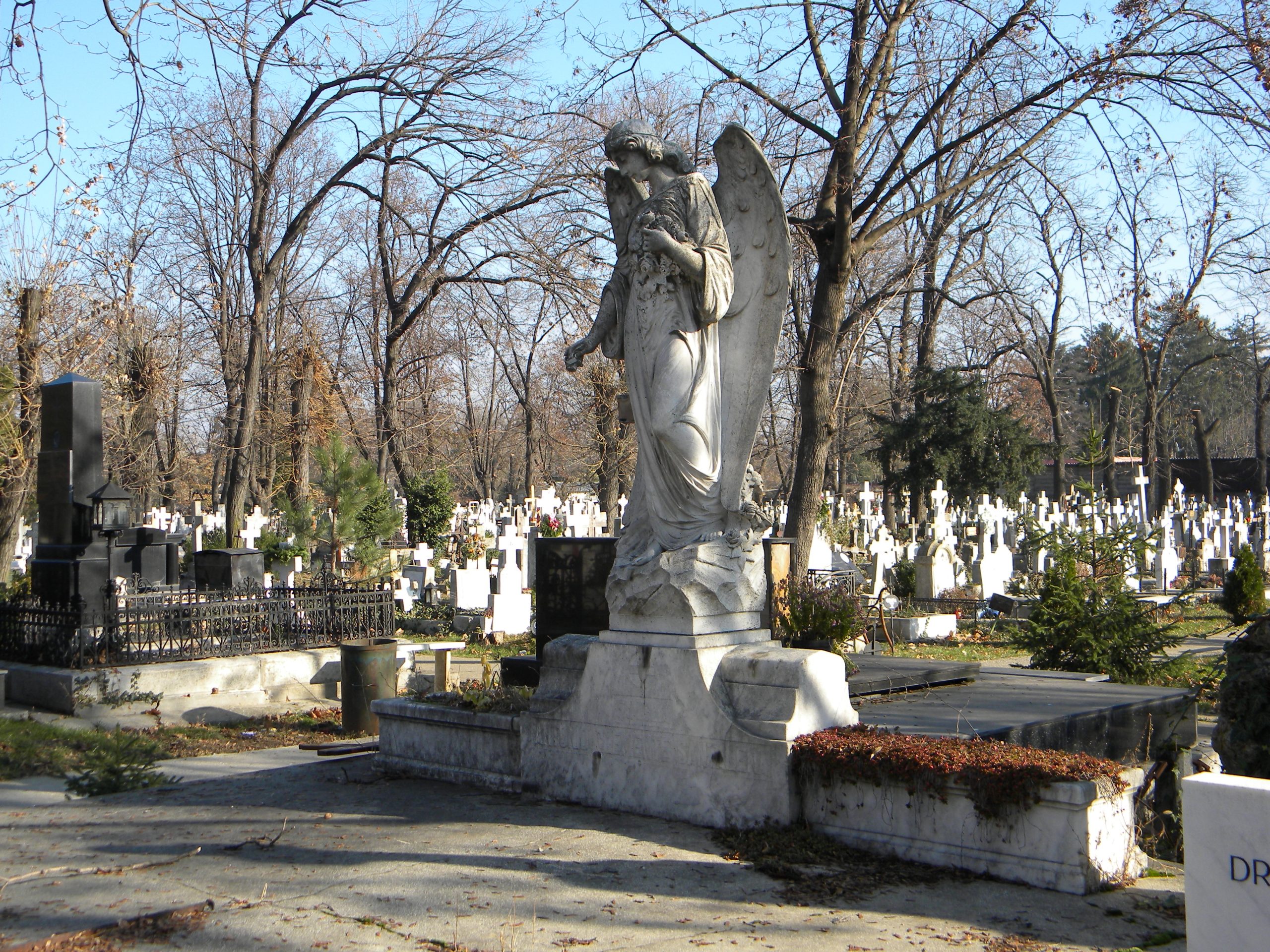Description
From: Bucharest, Historic Cemetery
Adress: Calea Șerban Vodă 249, București 040208
Up until the 19th century, the people of Bucharest buried their dead in their churchyards, but there were also cemeteries outside the city, mainly for paupers. In 1850, it was decided to create new cemeteries, one of which was to be sited on Șerban Vodă Lane, where Baron Barbu Bellu (1825-1900), the Minister of Religions and Justice, owned a large garden, which he donated to the Town Council. In 1852, under the direction of C.A. Rosetti (1816-1885), work commenced on the new cemetery, which was completed in 1858. Following a government decision to abolish churchyard cemeteries, wealthy families moved their ancestral remains to Bellu. Over the years, the most illustrious members of Bucharest society were buried here, and the cemetery became a true open air museum, stretching over 28 hectares. Many of the tombs are works of art, created by famous sculptors such as D. Paciurea, K. Storck, and M. Pătrașcu. The lanes are marked with plaques, enabling visitors to locate famous graves easily. Since 2011, the cemetery can be visited on Museums Night.
1. The Chapel
The first chapel, designed by Alexandru Orescu and buit in 1853, had murals by Constantin Lecca. After it fell into disrepair, it was replaced by a structure in the style of the Karlsbad Cathedral, in 1890. The first murals were by Mihail Popp, and later murals by Dimitrie Belizarie and Arthur Verona.
2.Writers’ Lane
Along with Actors’ Lane, this is the most visited place in the cemetery. Major Romanian writers Mihai Eminescu, Ion Luca Caragiale, George Coșbuc, Mihail Sadoveanu, Nicolae Labiș and Marin Preda are buried here. Other famous writers including George Bacovia, Nichita Stănescu, and Titu Maiorescu are buried elsewhere in the cemetery.
3.Actors’ Lane
Situated symmetrically to Writers’ Lane, on the left side of the cemetery, Actors’ Lane is the last resting place of Maria Filotti, Grigore Vasiliu Birlic, George Calboreanu, Constantin Tănase, Toma Caragiu, and Anda Călugăreanu. Amza Pellea is buried in Bellu Cemetery.
4.The Tomb of Aurel Vlaicu
An engineer, inventor and aviation pioneer, Aurel Vlaicu (1882-1913) was lilled on 13 September 1913, while attempting to cross the Carpathians. His tomb is flanked by a monument representing an eagle, sculpted by Ion Georgescu. Two other famous Romanian aviators, Traian Vuia and Henri Coandă, are buried in.
5.The Alexandru Costescu Chapel
The Gothic chapel erected in honour of Alexandru Costescu (1848-1910), Secretary General of the Ministry of Justice, was designed by German sculptor Karl Storck, who founded a dynasty of artists. Nearby stands the Mavrocordat family chapel also designed by Storck.
6.The Tomb of the Poroineanus
The Tomb of the Poroineanus is visited by many people, moved by the couple’s tragic story. They met in Paris and fell in love, but on returning to Romania they discovered by chance that they were siblings. Unable to endure the shame and the agony, they committed suicide. Their tomb was created by sculptor Rafaello Romanelli in 1902.
7.The Tomb of Iulia Hasdeu
The daughter of scholar Bogdan Petriceicu Hasdeu, Iulia Hasdeu, a child prodigy of Romanian culture, died of phthisis age just nineteen. Her tomb, like her castle in Campina, was buit by Ion Georgescu to the specifications of her father, who, in his turn, was guided by his daughter’s spirit.
8.The Tomb of Nicolae Paulescu
Dr Nicolae Paulescu, a Romanian professor of physiology at the University of Medicine and Pharmacy in Bucharest, was the first to isolate insulin, in 1916. Unfortunately, his discovery was recognized decades later. He is buried near the main entrance. The sculpture on the tomb, by Dimitrie Paciurea, depicts the agony of Christ.
9.The Gheorghieff Mausoleum
The crypt of the Gheorghieff brothers, who were 19th-century bankers, was designed by Ion Mincu and has four life-size sculptures of the Evangelists by Frederick Storck. The crypt is a historic monument.
10.The lady with the Umbrella
Legend tells that ,,the lady in white” or ,,the lady with the umbrella” was the mistress of a rich man from Bucharest. A teacher of foreign languages and governess, Katalina Boschott had a passionate affair in Herculane before dying as a result of a botched peritonitis operation. On her deathbed she is supposed to have said, ,,Cet animal de medecin m’a tue!” The words were originally written in gold letters on her tombstone. The statue is by Rafaello Romanelli.
